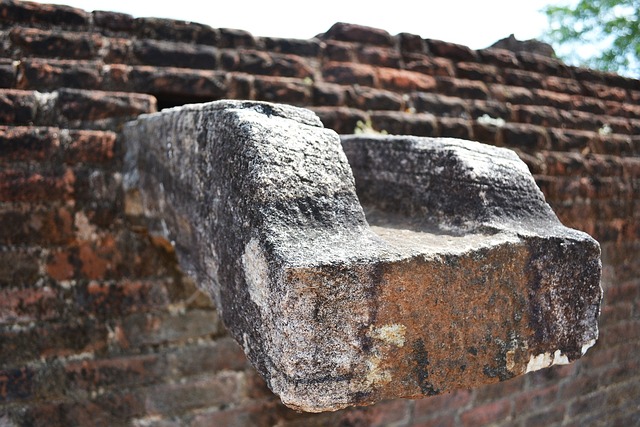A groundbreaking study by UCL researchers has unveiled China's oldest discovered water pipe system, dating back 4,000 years, offering a glimpse into the astonishing engineering prowess of the Longshan era.
Key Takeaways:
- Collaborative Ancient Engineering: Pingliangtai's 4,000-year-old water pipe system showcases collaborative Neolithic engineering.
- Innovative Rainwater Management: The unique two-tier drainage system at Pingliangtai, featuring ceramic pipes and strategic ditches, reveals advanced Neolithic adaptation for handling heavy rains and floods.
- Revolutionizing Historical Views: The discovery redefines history by proving that advanced water systems didn't solely rely on rulers. Pingliangtai's communal effort highlights the potential of cooperation and community for remarkable engineering accomplishments

The Longshan era's Engineering Marvel: A Two-Tier Drainage System That Defies Conventional Hierarchy
The pipes, nestled within the Pingliangtai walled site, reveal a remarkable feat of communal collaboration in crafting an intricate drainage network. Astonishingly, this sophisticated system materialized devoid of a centralized governing authority, showcasing the ingenious capabilities of an ancient society armed only with primitive tools.
Dr. Yijie Zhuang from UCL's Institute of Archaeology, the senior author of the study, emphasized the revolutionary nature of the find, stating, 'What we've unearthed challenges conventional wisdom, highlighting how a community united its efforts in realizing a hydrological marvel—astonishingly, all achieved without the conventional trappings of hierarchical power.' The discovery transcends time, redefining the limits of Neolithic achievement.
Community Collaboration and Hydrological Ingenuity: A Neolithic Engineering Enigma
These pipes were ingeniously connected to create a drainage network, guiding rainwater away from homes and roads. What's surprising is that this discovery challenges what we thought about how people lived in ancient times.
At a place called Pingliangtai, people lived in houses that were all about the same size, showing that there wasn't much difference in wealth. Even in the cemetery, there's no evidence of some people being more important than others. This is different from nearby towns at the same time, where rich and poor were clearly separated.
But here's the twist: even though there doesn't seem to be a strong leader in Pingliangtai, the community worked together to build and maintain these complex water pipes. This goes against what we used to think – that only big societies with powerful leaders could do such things. Pingliangtai shows that regular people, working together, could also achieve impressive feats of engineering.
This discovery changes our understanding of history. We used to believe that only societies with rulers could create advanced water systems. But Pingliangtai proves that cooperation and community effort can lead to incredible achievements, even without a central authority.
Neolithic Engineering and Environmental Adaptation
Dr. Hai Zhang, a co-author from Peking University, remarked, "Pingliangtai truly stands out as an exceptional site. The intricate water pipe network reveals an advanced grasp of engineering and hydrology, which was previously attributed only to societies with more distinct hierarchies."
Pingliangtai rests in the present-day Huaiyang District of Zhoukou City in central China. Back in ancient times, this town housed approximately 500 individuals, sheltered by protective earthen walls and surrounded by a moat. Nestled on the Upper Huai River Plain within the expansive Huanghuaihai Plain, the climate of this area 4,000 years ago witnessed notable seasonal shifts. Summer monsoons would frequently drench the region with up to half a meter of rain per month.
Dr. Hai Zhang explained, "In a bid to manage these heavy rains and avoid flooding our communities, the ancient residents of Pingliangtai took a unique approach. They designed a two-tier drainage system that stood unparalleled in their time. By crafting a network of simple yet strategically aligned drainage ditches alongside their homes, they redirected excess rainwater during the wet seasons. These channels then seamlessly connected to a series of ceramic water pipes, a technological marvel of that era. These pipes, although varied in decoration, shared common dimensions—about 20 to 30 centimeters in diameter and 30 to 40 centimeters in length. The ingenious assembly of multiple segments allowed the water to be effectively transported across considerable distances."
Remarkably, the precise method by which the Pingliangtai community collaborated to construct and manage this innovative infrastructure remains a mystery. This level of communal organization would have been equally essential for erecting the village's protective earthen walls and the encircling moat.
Dr. Hai Zhang further explained, "The drainage system in Pingliangtai stands out for its distinct purpose. Unlike other neolithic systems globally, which often dealt with sewage or had other uses, this system focused on diverting rain and floodwater from monsoons."
The research was supported by funding from the National Natural Science Foundation of China, alongside the Newton Advanced Fellowship of the British Academy."


